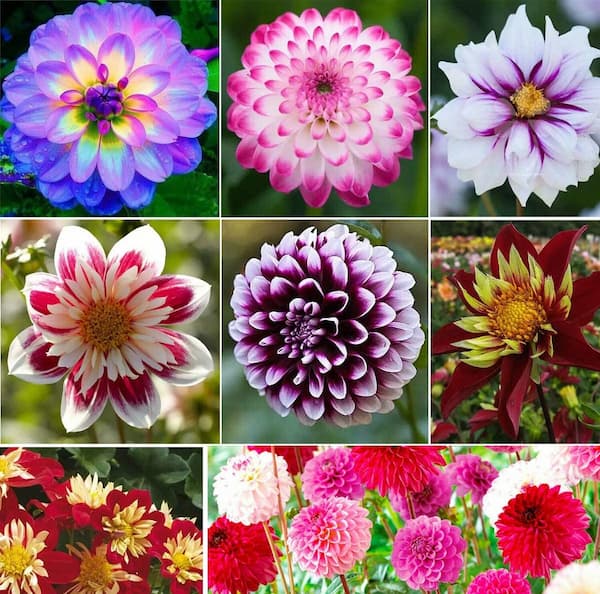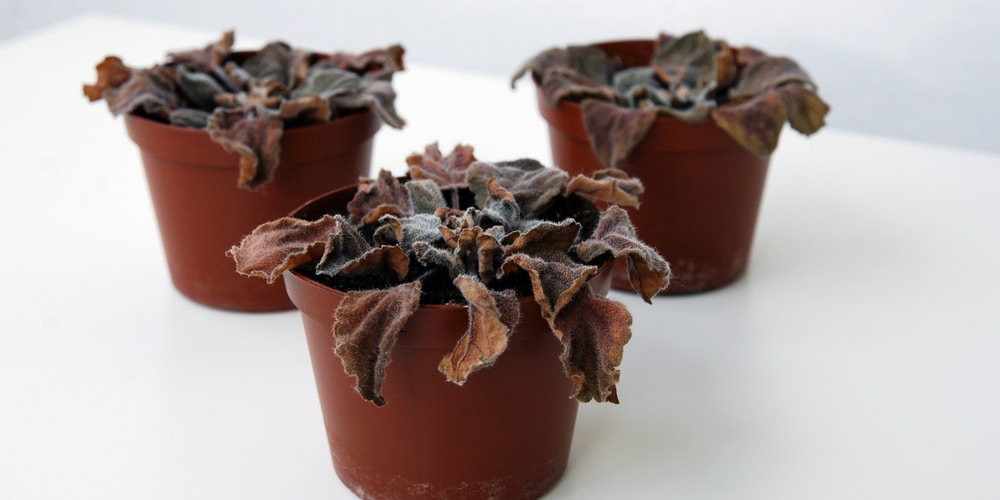To help you maintain the health of your split-leaf philodendron, we’ll go over these requirements, such as pruning, propagating, and repotting, as well as typical issues.
The split-leaf philodendron is a tropical plant with large, glossy green leaves with characteristic “splits” in their edges. Although it is a popular indoor plant that can be grown all year, this plant is native to warm-weather regions.
Madison Moulton, a gardening and indoor plant expert, clarifies what a Split-Leaf Philodendron actually is and discusses planting, care, and repotting in this article.
Further Reading: Are Philodendrons Toxic to Cats, Dogs or Other Pets?
- What is a Split-Leaf Philodendron?
- How to Take Care of a Split-leaf Philodendron?
- How to Plant a Split Leaf Philodendron?
- How to Repot a Split Leaf Philodendron?
- How to Prune a Split Leaf Philodendron?
- Care Tips for Split-Leaf Philodendron
- Common Problems
- Conclusion: Take Care of Your Split-leaf Philodendron
- FAQs
What is a Split-Leaf Philodendron?
A split-leaf philodendron is a low-maintenance tropical plant belonging to the Araceae family which grows large, green leaves with splits in their edges. It is commonly confused with the Monstera deliciosa (also known by the common name “even though they are different plants, the Swiss cheese plant.
The Monstera deliciosa has leaves with perforations (or fenestrations) that don’t reach the leaf’s edges, giving it a slightly different look than the split-leaf philodendron’s characteristic gapped leaves.
How to Take Care of a Split-leaf Philodendron?
Unexpectedly amenable indoors, this jungle giant. Split-leaf philodendron can tolerate most types of homes, though it prefers high humidity. Use a room humidifier, if you need to boost the moisture in the air.
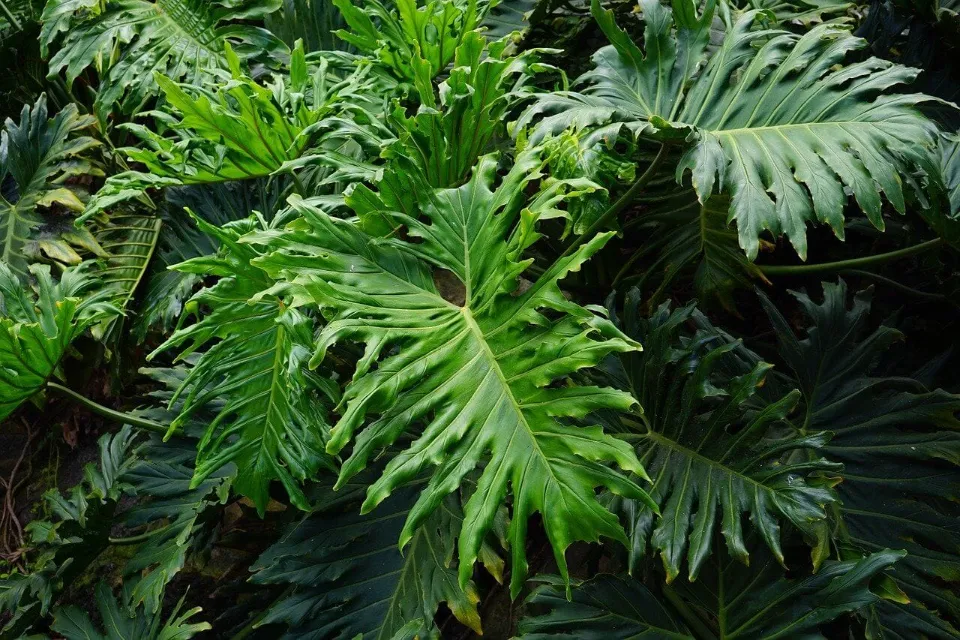
Light
Best light: bright, indirect light
Split Leaf Philodendrons thrive in environments with soft to strong light. Additionally, they can tolerate and adapt to shady environments. Avoid direct sunlight because it can burn or brown the foliage.
Water
Water requirements: Water needs: top two inches of soil should dry before rewatering
Split Leaf Philodendrons prefer moist soil that is not drenched in water. Before you water again, let the top two inches of soil dry out. To avoid soggy roots, make sure to empty out any extra water in the saucer beneath the container. It may indicate overwatering if the leaves start to turn yellow.
Humidity
humidity preferences: Aim for humidity around 40-50% with occasional misting
Split Leaf Philodendrons are tropical plants that thrive in high humidity, though they can also tolerate low humidity conditions. To increase the humidity in the air, use a room humidifier or simply mist the plants with a spray bottle. An indication of excessively dry air could be seen if the foliage starts to brown around the edges.
Temperature
ideal temperature: A temperature range of 65°F (18°C) and 80°F (27°C) is ideal for philodendrons. Philodendrons should not be kept in temperatures below 60°F (16°C).
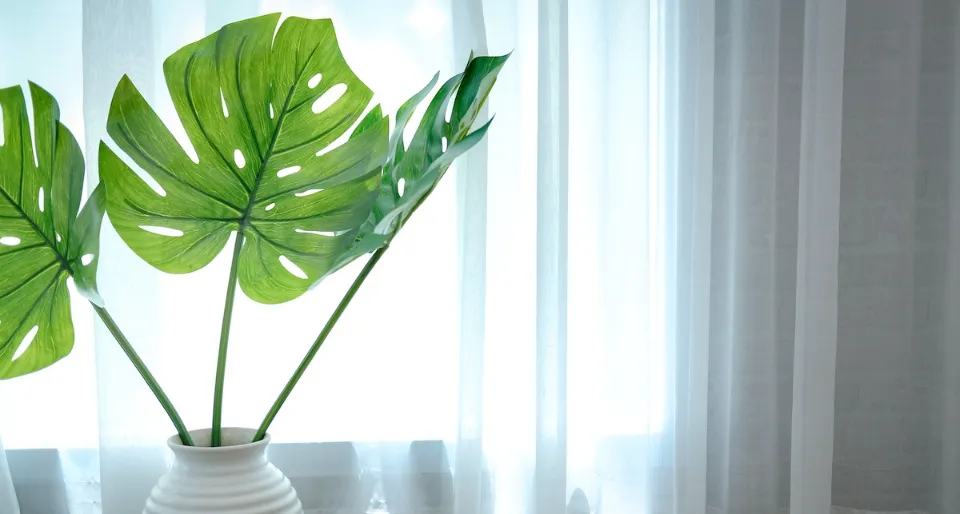
Fertilizer
fertilizer preferences: Use a general water-soluble fertilizer to fertilize Split Leaf Philodendrons every two weeks from spring to fall. In the colder months, feeding can be slowed down to once a month. Fertilizing the soil will encourage Philodendrons to grow bigger, glossier leaves.
Soil
- soil type: moisture-retentive and well-draining
- pH level: slightly acidic
Place the Split Leaf Philodendron in a nutrient-rich, moisture-retentive potting soil that drains well. A common potting mix can be improved by adding perlite and peat moss (sphagnum moss) to help the soil retain moisture.
How to Plant a Split Leaf Philodendron?
Several techniques, such as starting your plant from seedlings or air layering, can be used to propagate split-leaf philodendron plants. Further Reading: How to Propagate Philodendron?
By Seed
They can be grown from seed but it can be a slow process and difficult because they need warm temperatures.
By Air Layering
A very simple and straightforward technique to try is air layering. When a stem comes into contact with the soil, roots form. In nature, this process occurs frequently. An area of the stem needs to be wound. The place where roots emerge will be from this wound. You can accomplish this by cutting upwardly, but not completely through the stem.
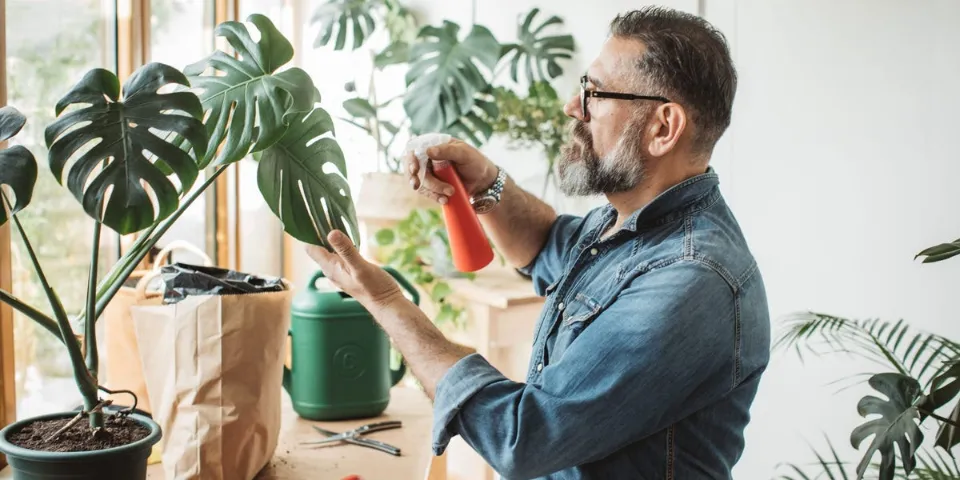
Then insert a toothpick or pin to keep the wound from closing then wrap this area with Sphagnum moss and cover the entire thing with plastic which helps to retain moisture that is needed to help it root. Up to a month may pass before it roots. After that, cut the stem off and replant it in a fresh container.
By Stem Cutting
This is the preferred method of propagatingsplit-leaf philodendrons. Cut a stem from the plant just below a leaf node if you want to grow plants from stem cuttings. Inspect the bottom third of the stem and make sure all leaves are gone.
After that, the rooting hormone is applied to the cut, and the cut end is planted vertically into wet potting soil. To keep moisture levels constant, wrap the plant in plastic. Water your newly planted stem cutting thoroughly for at least one week after planting, or until new growth starts to show on top.
How to Repot a Split Leaf Philodendron?
These plants grow quickly and appreciate their room. When repotted frequently, they can easily reach a high of 6 feet indoors, becoming a towering houseplant feature.
Smaller plants need to be repotted every year as they will quickly outgrow their pots. Every one to two years, larger plants can be replanted. You can continue to grow the plant in the same pot once it reaches its full size. Once the soil has deteriorated and lost its ability to retain moisture and nutrients, you will need to replace it every three to four years.
If your plant has roots growing through the drainage holes or stops growing in the peak seasons of spring and summer, you may need to repot sooner.
For these plants, it is not really necessary to choose a pot that is one to two sizes larger. They grow incredibly quickly and need lots of space to accommodate their large root systems. A larger pot is also better able to support the plant’s weight and prevent it from toppling over.
Use your judgment, based on the size and growth rate of the plant, to choose a new pot that will accommodate its growth. It can be larger than one size up, but it shouldn’t be too big because that could retain too much moisture and rot the roots.
How to Prune a Split Leaf Philodendron?
Split-leaf philodendrons should be pruned frequently to keep them in shape and to prevent disease and rot from developing on the dead leaves. Small, curled-over, brown-spotted new leaves may be an indication of excessive watering or root rot.
Additionally, you should prune your philodendron when the winter season ends and the summer begins (avoid doing this before December). This is because this is when plants typically begin their seasonal changes.
Before you prune, you should use sharp shears to cut off the ends of any lanky stems or branches. Make sure to remove all of the browned leaves and any dead branches. It’s advised that you cut it back to the trunk. To prevent the plant from outgrowing its container, make sure to trim these plants back annually because they have a tendency to grow very large.
Although you should prune the plant to keep it from taking over your home, never remove more than one-third of it at once as this can stunt growth and shock the plant.
Care Tips for Split-Leaf Philodendron

Many of the rules for caring for split-leaf philodendrons are also applicable to other indoor palms. Here are some instructions for taking care of your plant to make sure it grows tenaciously.
- Give your plant the right amount of light. Any room with a south or east-facing window is a suitable location for your plant because split-leaf philodendrons prefer bright indirect light. Your plant may be receiving too much direct sunlight if its leaves start to turn yellow.
- Keep your potting soil moist, but not drenched. Yellow leaves and root rot can result from overwatering split-leaf philodendrons. To prevent the plant from wilting, place a humidifier nearby or throughout the space. For even more moisture, mist the plant with a spray bottle.
- Be vigilant of pests. Although most plant pests are immune to the split-leaf philodendron, if the plant is neglected, mealybugs, aphids, and spider mites have been known to appear. To deter pests, mist your plant with a soap-and-water solution.
Common Problems
The split leaf has issues of its own, like all other plants. Both under- and over-watering your plant, as well as pests and diseases, are some of the most typical issues. Let’s look more closely at some typical issues with this plant and discuss some potential solutions.
Yellow Leaves
Overwatering is the most likely cause of this. Water should only be applied when the top few inches of soil are dry. Yellow leaves can also be brought on by a lack of nutrients or insufficient light if this isn’t the case. Put the philodendron in a spot with indirect bright sunlight rather than direct sunlight.
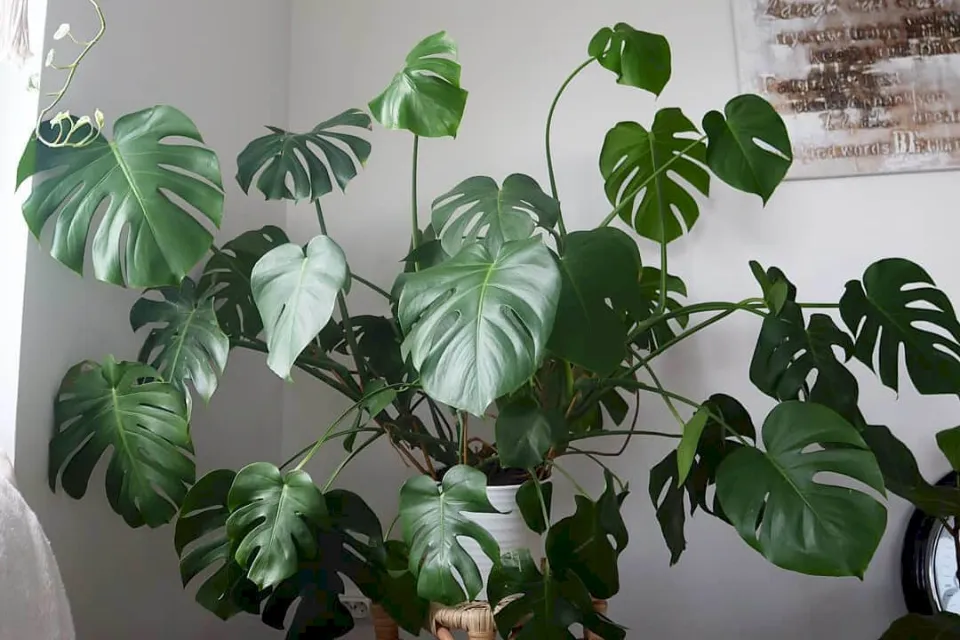
Dry, Brown, Shriveled Leaves
The Split Leaf Philodendron is probably underwater or the air is too dry. Prior to applying additional water, make sure the soil is not completely dry. Regular misting or the use of a pebble tray with water close to the plant can help to increase humidity levels.
Root Rot
After watering, any excess water should be thrown away because philodendron plants cannot tolerate soggy soil. It is best to use sterile scissors to cut away the infected portion of the plant as soon as possible. The roots will probably be soft and appear brown or black in color. To ensure that no infected rot is left, it should be repotted in a new pot with fresh soil.
Pests
Philodendrons with split leaves are generally pest-free. Pests like mealy bugs, spider mites, and thrips will cling to the plant if it is under stress.
You can use products like soapy water, mild dish detergent, and hot water, or insecticidal soap if pests do appear. Because some pesticides shouldn’t be used on plants, make sure the product is labeled specifically for houseplants!
Diseases
While bacterial diseases like Xanthomonas leaf spot, Erwinia blight, and leaf tip burn aren’t very common in split-leaf philodendrons, they can still affect them. There most likely is a bacterial disease present if you see dark lesions on the leaves or if they start to curl.
It’s crucial to make sure you adhere to the care instructions if you want to keep your split-leaf philodendron healthy.
Conclusion: Take Care of Your Split-leaf Philodendron
The split-leaf philodendron is ideal if you’re looking for a tropical houseplant that requires little care. The split-leaf philodendron is a stunning plant with a long lifespan. Considering their ease of care and adaptability, there is no reason not to get one.
You should feel more comfortable taking care of one of these plants after reading our advice, we hope!
FAQs
How Often Do You Water a Split-leaf Philodendron?
Moderate watering is needed for the Split Leaf Philodendron. Water once every 7 to 10 days. The majority also don’t seem to mind occasionally being dry. Water the soil deeply and consistently.
Can a Split-leaf Philodendron Take Full Sun?
Split-leaf philodendrons prefer bright indirect light, so any room with a south or east-facing window is a suitable place for your plant. It may be receiving too much direct sunlight if your plant’s leaves start to turn yellow.
Is a Split-leaf Philodendron Easy to Grow?
Growing this philodendron indoors is easy as long as you give it a large enough container and size up as it grows. For it to flourish, it will need a location with indirect light and routine watering. Zones 8b through 11 are suitable for growing split-leaf philodendrons outside.








